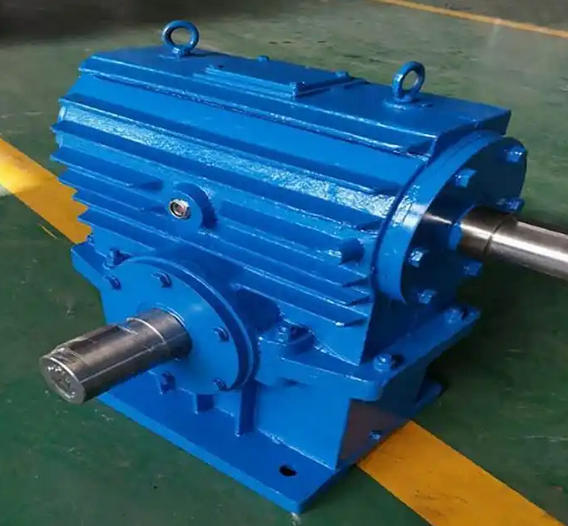How to determine if the abnormal noise of WHS12-12.5-II worm gear reducer is caused by installation deviation
To determine whether the abnormal noise of WHS120-12.5-II worm gear reducer is caused by installation deviation, the following characteristics and troubleshooting methods should be combined:1. Vibration and noise characteristics
High frequency "buzzing sound": As the speed increases, the noise intensifies, and the vibration at the coupling is most obvious, which may be caused by the coaxiality deviation of the input/output shaft (radial>0.05mm or angular deviation>0.1 °).
Low frequency vibration and "rustling sound": The low-frequency vibration of the whole machine is accompanied by the friction sound between the casing and the base, usually due to the excessive levelness of the machine base (flatness>0.1mm/m) or the lack of diagonal tightening of the anchor bolts.
Regular "clattering sound": Poor alignment of the coupling or excessive axial clearance can cause periodic impact, synchronized with the rotational speed.

2. Typical manifestations of installation deviation
Coaxiality issue: Use a dial gauge to check the runout of the outer circle of the coupling. If it exceeds 0.03mm, adjust the motor or load position.
Levelness issue: The level gauge measures the top surface of the machine base, and if the bubble offset exceeds 1 grid, it needs to be adjusted; When the anchor bolts become loose, visible displacement can be observed in the manual gearbox.
Abnormal bearings: Over tight installation causes "hissing sound" and bearing temperature>95 ℃, while over loose installation causes axial movement.
3. Troubleshooting steps
Tightening inspection: Tighten the anchor bolts and motor bracket screws again, and conduct a no-load test run for 5 minutes. If the abnormal noise disappears, it is considered a fixed mismatch.
Vibration measurement: If the coin is continuously tilted on the upright box or the amplitude measured by the vibration meter is greater than 0.1mm, it indicates installation deviation.
Temperature comparison: The temperature of the bearing seat is more than 15 ℃ higher than other parts of the box, which may cause friction overheating due to improper installation.
4. Differentiation from other faults
Lubrication issue: Intermittent "creaking sound" without improvement after oil replenishment, or the oil sample contains metal particles.
Bearing damage: There is a "clunking" sound or high-frequency whistling, and a stethoscope detects characteristic noise.
If the installation issue is confirmed, it is necessary to recalibrate the coaxiality and levelness, and standardize the tightening torque (such as 35-40N · m for M12 bolts).

